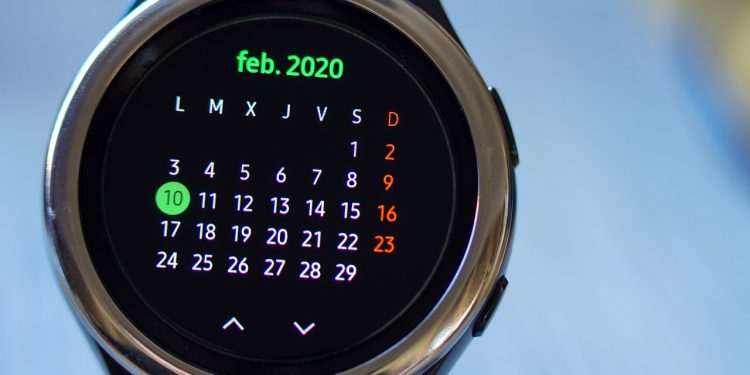Smartwatches have come a long way since their initial introduction as simple notification devices for smartphones. Today, they are powerful wearables that combine health tracking, communication tools, entertainment, and lifestyle features into compact, stylish devices that can enhance our daily lives. As technology continues to advance, smartwatches are now packed with features that can help us stay active, informed, and connected like never before. In this article, we’ll explore the latest in smartwatch technology, from advanced health features to the integration of AI and cutting-edge materials that make these devices smarter and more versatile.
Advanced Health and Wellness Tracking: Beyond Steps and Calories
One of the biggest selling points for smartwatches today is their ability to track health metrics, and recent advancements in technology have pushed these capabilities to impressive new heights. Modern smartwatches have moved well beyond simple step counts and calorie tracking, offering a wide range of health-focused features that help users monitor their well-being in a meaningful way.
1. ECG and Blood Oxygen Monitoring
Smartwatches like the Apple Watch Series 8 and Samsung Galaxy Watch 5 now feature sophisticated health sensors capable of taking an electrocardiogram (ECG) to detect potential signs of atrial fibrillation (AFib). The ECG feature allows users to monitor their heart rhythm and detect irregularities that could indicate a health concern. It provides users with detailed reports that can be shared with healthcare providers, making it a valuable tool for those with underlying heart conditions.
Another significant health feature in the latest smartwatches is blood oxygen (SpO2) monitoring. This sensor measures the oxygen saturation in your blood, providing insights into your respiratory health. Blood oxygen monitoring has become particularly relevant during the pandemic, as it can help users detect symptoms related to respiratory issues early on.
2. Advanced Sleep Tracking and Stress Monitoring
Modern smartwatches also offer advanced sleep tracking, which can monitor different stages of sleep, including light, deep, and REM cycles. Watches like the Fitbit Sense and Garmin Venu 2 provide detailed insights into your sleep quality, helping you understand how well you’re resting and how to improve your sleep patterns for better overall health.
Stress monitoring is another innovative feature that is gaining traction in the smartwatch world. Devices like the Fitbit Sense and Huawei Watch GT3 include sensors that measure variations in your heart rate to provide a stress score, helping users become more aware of their stress levels and take action when needed. These watches often include guided breathing exercises to help users manage stress in real time.
3. Temperature Sensors and Women’s Health
Temperature sensors are now being added to smartwatches to track skin temperature changes, providing insights into potential health issues or changes in physical condition. For example, the Apple Watch Series 8 includes temperature sensing capabilities designed to assist with cycle tracking for women. This feature helps women monitor their menstrual cycles, predict ovulation windows, and gain a better understanding of their reproductive health.
Fitness Features: Personalized Workouts and Coaching
Fitness has always been a major focus of smartwatch technology, and the latest models have taken personalized training to the next level. These wearables are not just about counting steps—they are becoming personal fitness coaches that offer tailored workouts, track a wide variety of exercises, and motivate users to stay active.
1. Built-In GPS and Multi-Sport Tracking
For fitness enthusiasts, built-in GPS is an essential feature for tracking outdoor activities like running, cycling, and hiking. Smartwatches like the Garmin Forerunner 955 and Apple Watch Ultra are equipped with precise GPS capabilities that track distance, pace, and elevation without the need for a smartphone. This makes them ideal for serious athletes and those who enjoy exploring the outdoors.
In addition to GPS, multi-sport tracking allows users to switch between different types of exercises during a single workout. Whether you’re swimming, running, or cycling, watches like the Polar Grit X Pro and Suunto 9 Peak offer seamless tracking, providing users with detailed data on each activity. This versatility makes them excellent tools for triathletes or those who enjoy a diverse fitness routine.
2. AI-Driven Fitness Coaching
Artificial intelligence is playing a growing role in smartwatch fitness features. Watches like the Fitbit Sense and the Huawei Watch Fit use AI algorithms to analyze users’ fitness data and provide personalized workout recommendations. By considering factors like current fitness level, sleep quality, and recent activity, these wearables can suggest exercises and daily activity goals that are realistic and achievable.
Some devices even include virtual coaching, where users can follow along with animated exercises on the watch screen. This feature is particularly useful for those who prefer working out at home and want the guidance of a virtual coach without the need for a separate screen or device.
Communication and Lifestyle Features: Staying Connected on the Go
Smartwatches are evolving into fully-featured communication devices that can keep us connected without always needing to reach for our phones. Whether it’s taking calls, replying to messages, or even making payments, modern smartwatches are making daily interactions faster and more convenient.
1. LTE Connectivity
Many of the latest smartwatches, such as the Samsung Galaxy Watch 5 LTE and Apple Watch SE, offer LTE connectivity, allowing users to make calls, send texts, and stream music directly from their wrist. This is particularly useful for individuals who prefer to leave their phone at home while running errands or working out. The freedom that LTE provides helps users stay connected without the need for a bulky smartphone, adding a layer of convenience to daily life.
2. Voice Assistants and Smart Home Integration
Voice assistants have also become a standard feature in most high-end smartwatches. Siri, Google Assistant, and Bixby are all integrated into various smartwatch models, enabling users to control smart home devices, check the weather, set reminders, or navigate using voice commands. The ability to control smart home gadgets from your wrist, such as adjusting the thermostat or turning off the lights, adds an extra layer of functionality to wearable technology, making it even more indispensable.
3. NFC Payments
Contactless payments are now a common feature in most smartwatches, making it easier than ever to pay for purchases on the go. Services like Apple Pay, Google Pay, and Samsung Pay are integrated into many models, allowing users to make secure payments at stores with just a tap of their watch. This not only simplifies transactions but also makes everyday activities more convenient, particularly when you’re out for a run or quick errand and don’t want to carry a wallet.
Battery Life and Power Efficiency: A Balancing Act
Battery life has always been a crucial factor in smartwatch design, and manufacturers are continually seeking ways to extend usage time without compromising features. The latest models offer innovative solutions to strike a balance between power-hungry features and efficient battery use.
1. Longer Battery Life
Devices like the Garmin Fenix 7 and Suunto 9 Peak are known for their long battery life, often lasting over a week on a single charge even with active tracking features. These watches are designed for users who spend a lot of time outdoors and may not have regular access to a charger. In contrast, feature-rich watches like the Apple Watch Series 8 and Samsung Galaxy Watch 5 tend to have shorter battery life, typically lasting one to two days, due to their vibrant displays and extensive features.
2. Solar Charging
To extend battery life even further, some brands have introduced solar charging capabilities. Garmin’s Solar series, for instance, uses solar panels built into the watch face to harness sunlight and extend the watch’s battery life. This feature is particularly useful for outdoor adventurers who spend a lot of time in the sun, allowing them to go longer between charges and stay connected even in remote areas.
Cutting-Edge Materials and Design
Smartwatches are also evolving in terms of design and materials, with a focus on durability, style, and personalization. The latest models are not just tech gadgets; they are fashion statements and rugged tools designed to handle a wide range of environments.
1. Rugged and Durable Builds
For users who need a watch that can handle extreme conditions, rugged models like the Apple Watch Ultra and Garmin Instinct 2 offer military-grade durability. These watches are built with materials like titanium, sapphire glass, and fiber-reinforced polymer, ensuring they can withstand impacts, water immersion, and harsh environments. This durability makes them ideal for athletes, adventurers, and anyone with an active lifestyle.
2. Customizable and Fashion-Forward Options
While some smartwatches focus on durability, others are designed with style in mind. Brands like Fossil and Withings offer smartwatches that combine classic watch aesthetics with smart technology, allowing users to enjoy the benefits of a smartwatch without sacrificing style. Many models also feature interchangeable bands, allowing users to customize their watch to match their outfit or mood, making smartwatches a versatile accessory for both formal and casual settings.
The Future of Smartwatch Technology
Smartwatch technology continues to evolve at a rapid pace, and the future holds exciting possibilities. From improved health sensors capable of detecting even more conditions to enhanced AI that can provide better fitness coaching and personalized insights, smartwatches are on track to become even more integral to our daily lives.
The integration of augmented reality (AR) into smartwatches is also a possibility on the horizon, potentially allowing users to interact with digital elements in their surroundings directly from their wrist. Furthermore, as battery technology advances, we can expect even longer-lasting devices that require less frequent charging, enhancing the convenience factor.
Overall, the latest advancements in smartwatch technology are transforming these devices from simple extensions of our smartphones into powerful standalone tools that support health, fitness, communication, and lifestyle needs. Whether you’re an athlete, a professional, or just someone looking to stay connected and healthy, there is a smartwatch out there with the features and capabilities to fit your lifestyle.






